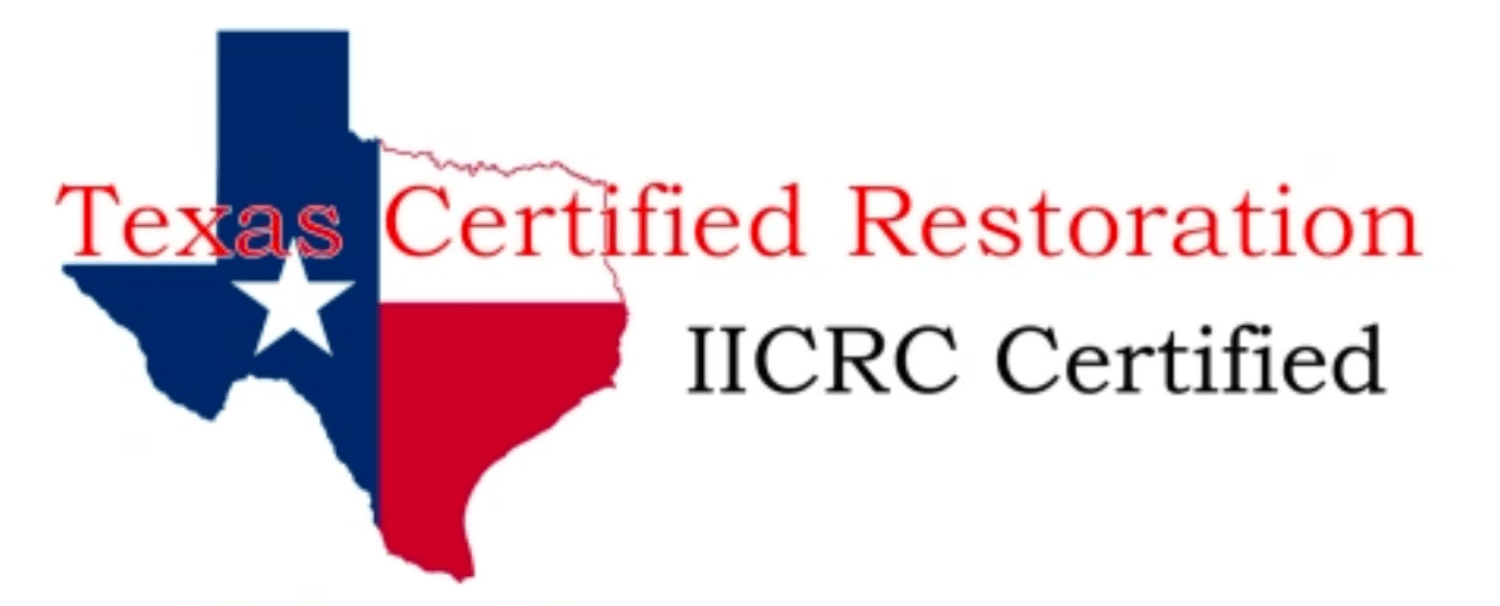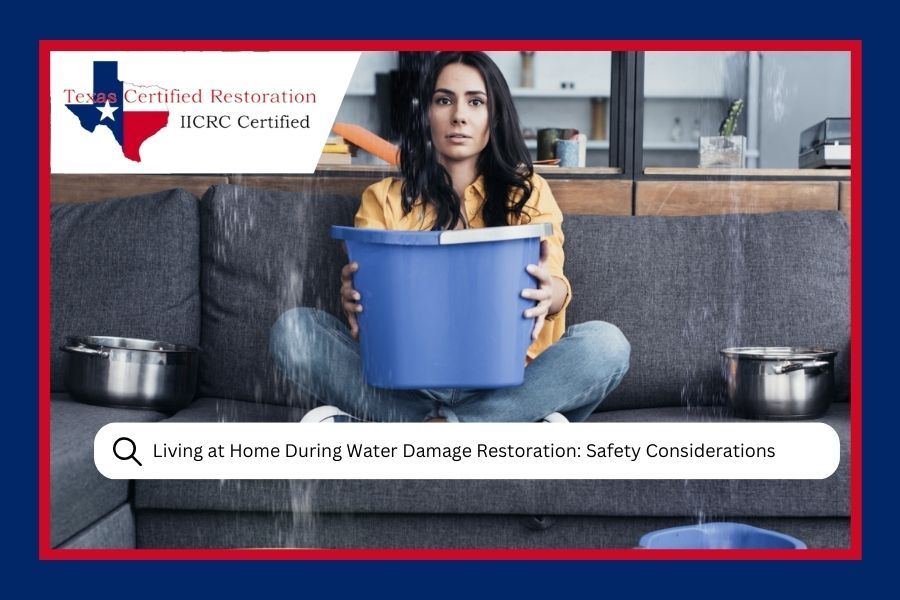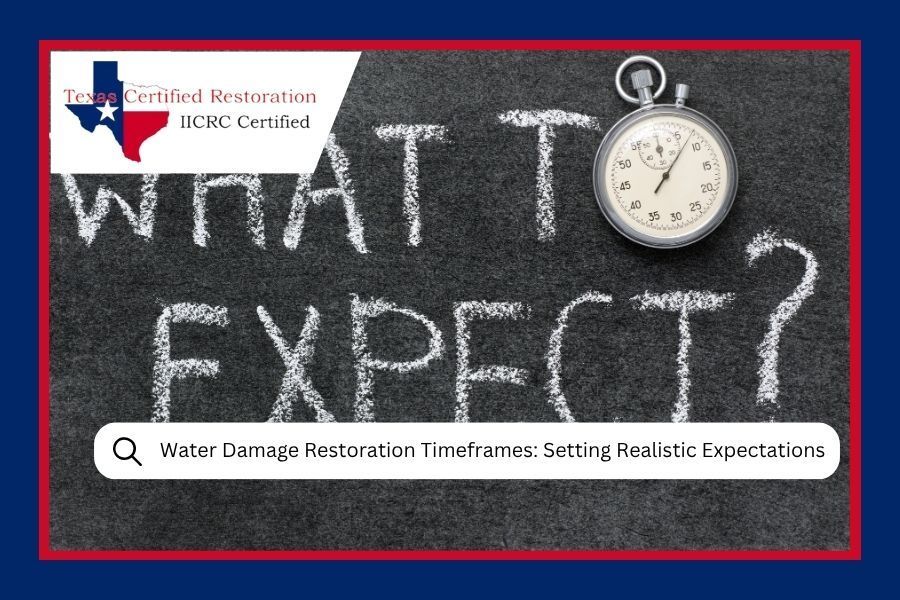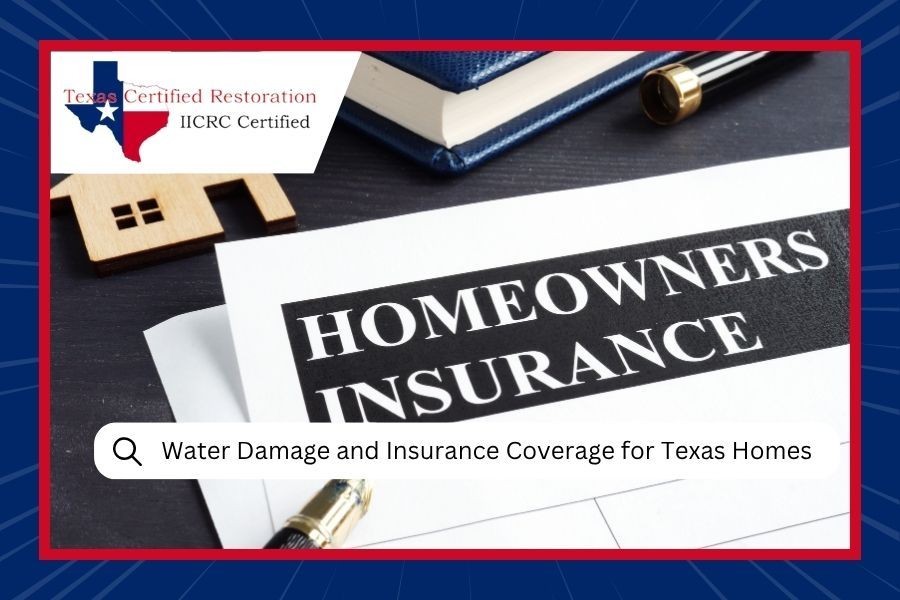
Water Damage Basics: What Texas Homeowners Need to Know About Insurance Coverage
Let's be honest, nobody wakes up thinking "I wonder if my water damage insurance coverage is up to snuff?" But here in Texas, where Mother Nature loves to remind us who's boss with sudden storms and flooding, understanding your insurance coverage could save you thousands of dollars and countless headaches down the road.
Water damage insurance coverage can be confusing, especially when you're dealing with the stress of actual water damage in your home. That's where our team at Texas Certified Restoration comes in. We've spent over 10 years helping Round Rock and North Austin families navigate both the restoration process and the insurance maze that comes with it.
Understanding the Different Types of Water Damage
Not all water damage is created equal, and your insurance company definitely knows this. Water damage typically falls into three main categories, and knowing the difference can make or break your claim.
Clean Water Damage
This is the "best case scenario" if you can call any water damage that. Clean water comes from sources like broken supply lines, overflowing bathtubs, or appliance malfunctions. Most standard homeowner's policies cover sudden and accidental clean water damage.
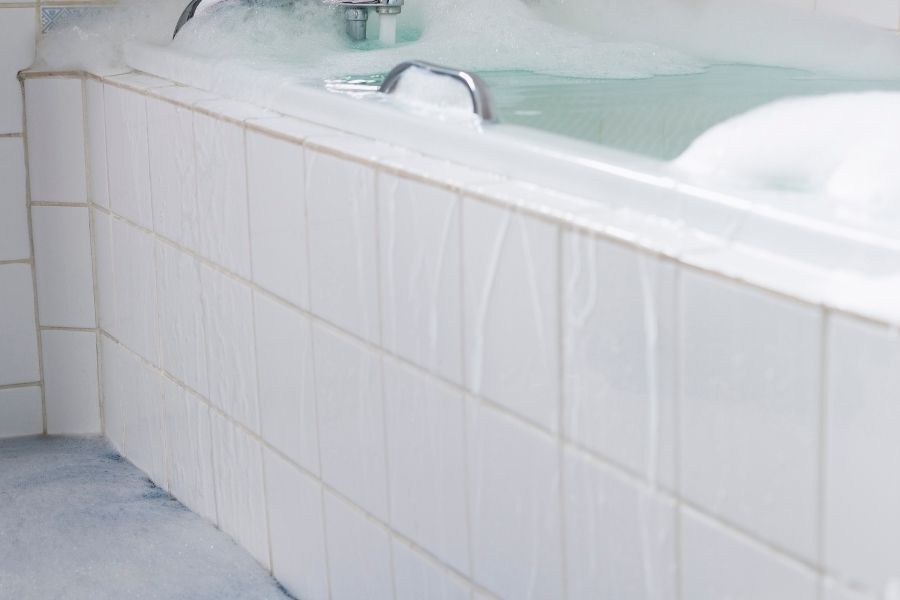
Overflowing bathtubs represent sudden and accidental clean water damage, usually covered under most homeowner's policies.
Gray Water Damage
Gray water is slightly contaminated and comes from sources like washing machines, dishwashers, or toilet overflows (without solid waste). Coverage can get tricky here, depending on your specific policy language.

Washing machine overflows can create gray water damage, where insurance coverage varies depending on your specific policy terms.
Black Water Damage
This is the worst-case scenario. Black water contains harmful bacteria and comes from sources like sewage backups, flooding, or standing water that's been sitting for more than 48 hours. Many standard policies exclude black water damage, which is why understanding your coverage is crucial.
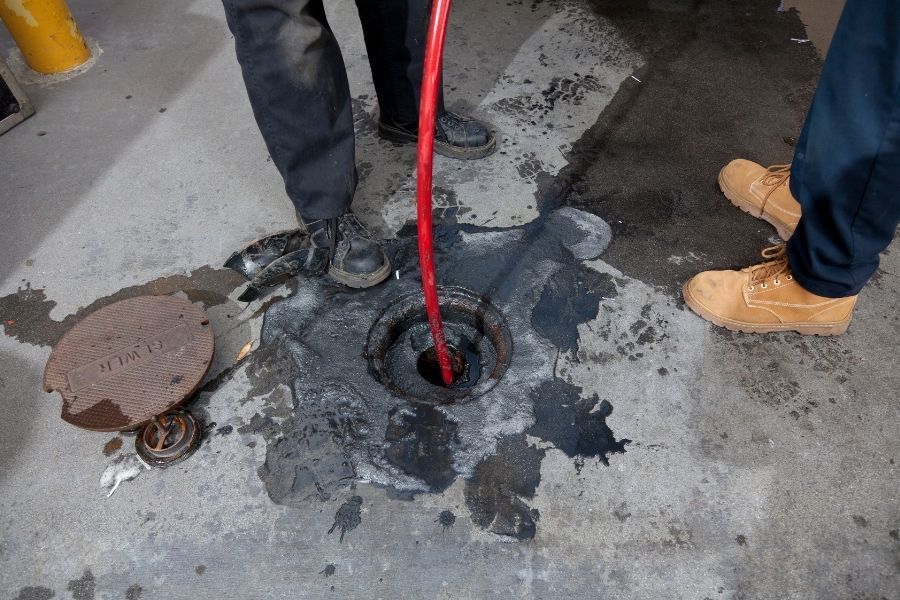
Sewage backups create dangerous black water damage that's often excluded from standard homeowner's insurance policies.
What Most Texas Homeowners Don't Realize About Their Coverage
Here's where it gets interesting (and potentially expensive). Most homeowners assume their standard policy covers all water damage, but that's not always the case. In Texas, we see specific challenges that other states might not face.
Water Damage Coverage Quick Reference
| Water Damage Type | Source Examples | Typical Coverage | Special Notes |
|---|---|---|---|
| Clean Water | Burst pipes, appliance leaks, overflowing bathtubs | Usually covered under standard homeowner's policy | Must be sudden and accidental |
| Gray Water | Washing machine overflow, dishwasher malfunction, toilet overflow (no solids) | Often covered, but check policy details | Coverage can vary by insurer |
| Black Water | Sewage backup, flood water, contaminated standing water | Typically excluded from standard policies | Requires additional coverage |
| Flood Damage | External water entry, storm surge, river overflow | Excluded from homeowner's insurance | Requires separate flood insurance |
| Gradual Damage | Slow leaks, long-term moisture buildup | Usually excluded | Must be sudden and accidental for coverage |
Flood vs. Water Damage: The Million-Dollar Distinction
Your standard homeowner's insurance typically covers water damage from internal sources, like a burst pipe or appliance failure. But if water enters your home from outside (like during those intense Texas storms we're famous for), that's considered flood damage, and you'll need separate flood insurance.
This distinction has caught countless Texas families off guard. During hurricane season, when we get those torrential downpours, water can enter through your roof, windows, or even seep up through the foundation. If it's coming from outside, your standard policy might leave you high and dry, so to speak.
Texas weather can be unpredictable. Urban flooding, storm surge, and even broken water mains can cause flooding that requires separate flood insurance coverage. According to FEMA , even homes in low-risk areas can experience flooding, making flood insurance a smart consideration for Texas homeowners.
The Gradual Damage Exclusion
Insurance companies are pretty smart (annoying, but smart). Most policies exclude damage that happens gradually over time. So if you have a slow leak behind your bathroom wall that eventually causes significant damage, your claim might be denied because the damage wasn't "sudden and accidental."
This is why we always tell our clients to address water issues immediately, no matter how small they seem. If you're unsure about warning signs of water damage , it's better to have it checked by professionals than to risk a denied claim later.
Ready to Check Your Coverage? Let Us Help
Don't wait until water is standing in your living room to figure out your insurance situation. Our experienced team at Texas Certified Restoration can help you understand your coverage and provide professional assessment services.
Get Expert AssessmentHow to File a Successful Water Damage Insurance Claim
Filing a water damage claim doesn't have to be a nightmare, but it does require some strategy. After helping hundreds of Round Rock families through this process, here's what we've learned works best.
Step 1: Document Everything Immediately
As soon as you discover water damage, start taking photos and videos. Don't just snap a quick picture, document the extent of the damage from multiple angles. Include close-ups of damaged items and wide shots showing the overall affected area.
Your insurance adjuster won't be there immediately, and conditions can change quickly. The more documentation you have, the stronger your claim will be.
Step 2: Contact Your Insurance Company ASAP
Most policies require you to report damage within a reasonable timeframe. Call your insurance company as soon as it's safe to do so. Many companies have 24-hour claim reporting, which is helpful since water damage often happens at the most inconvenient times.
Step 3: Mitigate Further Damage
Here's something that trips up many homeowners: you're required to prevent further damage when possible. This might mean turning off the water supply, removing standing water, or calling professionals for emergency flood damage restoration.
Keep receipts for any emergency services or supplies you purchase. These costs are often reimbursable under your policy. For more detailed guidance, check out our post on what not to do after water damage to avoid common mistakes that could complicate your claim.
Step 4: Work with Restoration Professionals
Insurance companies prefer working with certified restoration professionals who understand the claims process. Our team at Texas Certified Restoration handles restoration insurance claims regularly and can help advocate for you throughout the process.
Common Insurance Coverage Mistakes Texas Homeowners Make
Mistake #1: Assuming Flood Insurance Isn't Necessary
"We don't live near a river or lake, so we don't need flood insurance." We hear this all the time in the Round Rock area. But according to FEMA, about 25% of flood claims come from moderate to low-risk areas.
Mistake #2: Not Understanding Replacement Cost vs. Actual Cash Value
Some policies pay replacement cost (what it costs to replace or repair with similar materials), while others pay actual cash value (replacement cost minus depreciation). If you have actual cash value coverage, you might be surprised how little you receive for that 10-year-old hardwood floor.
Mistake #3: Inadequate Coverage Limits
Your dwelling coverage should be enough to completely rebuild your home at today's construction costs. Many homeowners haven't updated their coverage limits in years and find themselves underinsured when disaster strikes. The Insurance Information Institute recommends reviewing your coverage annually to ensure adequate protection.
Texas-Specific Insurance Considerations
Living in Texas comes with unique challenges that affect water damage coverage. Our state's weather patterns, combined with specific insurance regulations, create situations that homeowners in other states don't face.
Hurricane Deductibles
Many Texas insurance policies include separate, higher deductibles for hurricane damage. These are typically percentage-based (like 2% of your dwelling coverage) rather than flat dollar amounts. For a $300,000 home, a 2% hurricane deductible means you'd pay the first $6,000 of any hurricane-related damage.
Hail Damage Complications
Texas leads the nation in hail damage claims, and hail often brings water damage with it. Hail can damage roofing materials, creating entry points for water. Understanding how your policy handles combined perils (hail damage that leads to water damage) is crucial, especially given how frequently our storm damage restoration team responds to these types of claims in the Round Rock area.
Wind vs. Water Disputes
When a hurricane hits Texas, determining whether damage was caused by wind (usually covered) or flooding (requires separate coverage) can become a major dispute. Having proper documentation and professional assessment becomes critical in these situations.
How to Maximize Your Water Damage Insurance Coverage
Regular Policy Reviews
Insurance needs change over time. We recommend reviewing your policy annually, especially after major home improvements or changes in local building costs. What seemed like adequate coverage five years ago might fall short today. Understanding common causes of water damage can also help you evaluate whether your current coverage addresses the most likely risks to your home.
Understand Your Deductibles
Many homeowners focus only on their premium and ignore their deductibles. A lower premium might come with a higher deductible that makes filing smaller claims impractical.
Consider Additional Endorsements
Depending on your situation, additional coverage options might make sense:
Service Line Coverage: Protects against damage from broken underground utility lines
Ordinance and Law Coverage: Helps cover additional costs if local building codes require upgrades during repairs
Extended Replacement Cost: Provides additional coverage above your dwelling limit
Keep Detailed Home Inventory
Documenting your belongings before damage occurs makes the claims process much smoother. Include photos, receipts, and descriptions of valuable items. Store this information somewhere secure and easily accessible.
Working with Restoration Companies and Insurance
Choosing the right restoration company can significantly impact your insurance experience. Here's what to look for and how to make the relationship work in your favor.
Verify Certifications and Insurance
Make sure any restoration company you hire is properly certified and insured. Our team at Texas Certified Restoration maintains all required certifications and works regularly with major insurance providers throughout the Round Rock and North Austin area.
Get Everything in Writing
Whether it's an estimate, work authorization, or change order, get it in writing. This protects both you and helps with insurance documentation.
Understand the Insurance Billing Process
Many restoration companies can bill your insurance directly after you've met your deductible. This can help with cash flow during an already stressful time. However, you remain responsible for any amounts not covered by insurance.
Checklist: Preparing for Water Damage Insurance Claims
Before Damage Occurs:
- Review your homeowner's insurance policy annually
- Consider flood insurance if you don't have it
- Document your home's condition and belongings with photos/video
- Know your insurance company's contact information and policy number
- Research certified restoration professionals in your area
- Understand your deductibles and coverage limits
When Damage Occurs:
- Ensure everyone's safety first
- Stop the water source if possible and safe to do so
- Document damage with photos/videos from multiple angles
- Contact your insurance company immediately
- Contact a certified restoration professional for assessment
- Keep receipts for emergency services and temporary living expenses
- Don't throw away damaged items until instructed by your adjuster
During the Claims Process:
- Keep detailed records of all communications with your insurance company
- Get repair estimates from certified professionals
- Review your adjuster's estimate carefully
- Ask questions if anything is unclear
- Don't accept the first settlement if you believe it's insufficient
The Role of Professional Restoration in Insurance Claims
Working with experienced restoration professionals isn't just about fixing the damage, it's about ensuring you get fair treatment from your insurance company. Our team has seen how proper documentation and professional assessment can mean the difference between a smooth claims process and a lengthy dispute.
Moisture Detection and Documentation
Professional-grade moisture meters and thermal imaging can detect hidden water damage that might not be visible to the naked eye. This technology helps ensure that all damage is identified and documented for your insurance claim.
Proper Drying Protocols
Insurance companies want to see that proper drying procedures were followed to prevent secondary damage like mold growth. Professional restoration companies follow industry standards for drying that satisfy insurance requirements.
Detailed Damage Assessment
Experienced restoration professionals can identify damage that untrained eyes might miss. This comprehensive assessment helps ensure your claim covers all necessary repairs.
Understanding Insurance Adjuster Interactions
Your insurance adjuster plays a crucial role in determining how much your claim pays out. Understanding their perspective and preparing for their visit can significantly impact your settlement.
Preparing for the Adjuster Visit
Clean up obvious debris and standing water before the adjuster arrives, but don't dispose of damaged items yet. Make the area safe and accessible, but preserve evidence of the damage.
Have your documentation ready: photos, videos, receipts, and any professional assessments. The more organized you are, the more professional and credible you appear.
What Adjusters Look For
Insurance adjusters are trained to identify the source of water damage and determine whether it's covered under your policy. They'll also assess the extent of damage and estimate repair costs.
Be present during the inspection and ask questions. If something doesn't seem right or if you disagree with their assessment, speak up. You have the right to request a reinspection or seek an independent assessment.
When to Consider Public Adjusters
If your claim is complex or if you're having disputes with your insurance company, you might consider hiring a public adjuster. These professionals work for you, not the insurance company, and can help advocate for a fair settlement.
However, public adjusters charge a percentage of your settlement (typically 10-15%), so consider whether the potential increase in settlement justifies the cost.
Frequently Asked Questions
Q: Does homeowner's insurance cover all types of water damage?
A: No, standard homeowner's insurance typically covers sudden and accidental water damage from internal sources (like burst pipes or appliance malfunctions) but excludes flood damage from external sources, gradual leaks, and certain types of sewage backup. You'll need separate flood insurance and potentially additional endorsements for comprehensive coverage.
Q: How long do I have to file a water damage insurance claim in Texas?
A: While Texas doesn't specify an exact timeframe, most insurance policies require "prompt" notification, typically within 60 days of discovering the damage. However, it's best to report damage immediately. Delays in reporting can potentially void your coverage or complicate the claims process.
Q: Will filing a water damage claim increase my insurance premiums?
A: Filing a claim can potentially affect your premiums, especially if you have multiple claims within a short period. However, this varies by insurance company and your claims history. The impact of not filing a claim when you need coverage far outweighs potential premium increases, and many insurers offer claim-free discounts that reset over time.
Q: What's the difference between water damage restoration and flood damage restoration for insurance purposes?
A: Insurance companies distinguish between internal water damage (covered by homeowner's insurance) and flood damage from external sources (requires separate flood insurance). However, the restoration process is often similar. Professional restoration companies like Texas Certified Restoration can work with both types of claims and help determine which coverage applies to your specific situation.
Ready to protect your Round Rock home from water damage? Don't wait until disaster strikes to understand your coverage. Our experienced team at Texas Certified Restoration is here to help you navigate both prevention and restoration. Give us a call at (512) 883-6760 to discuss your specific situation and get expert guidance on protecting your most valuable investment.
